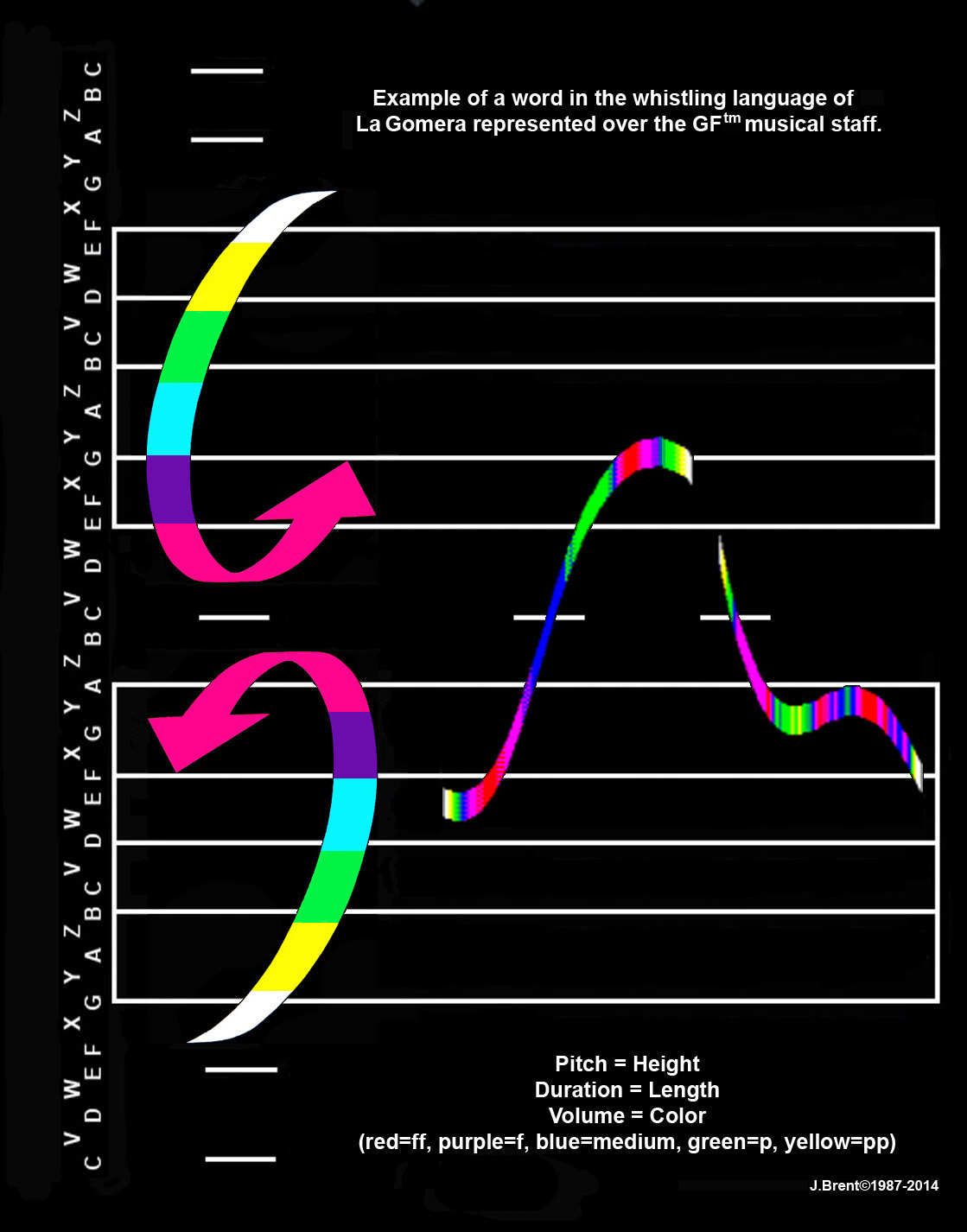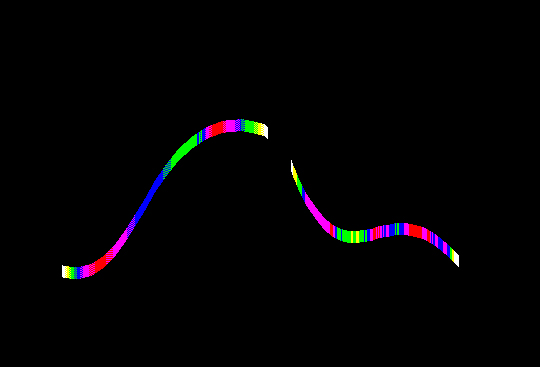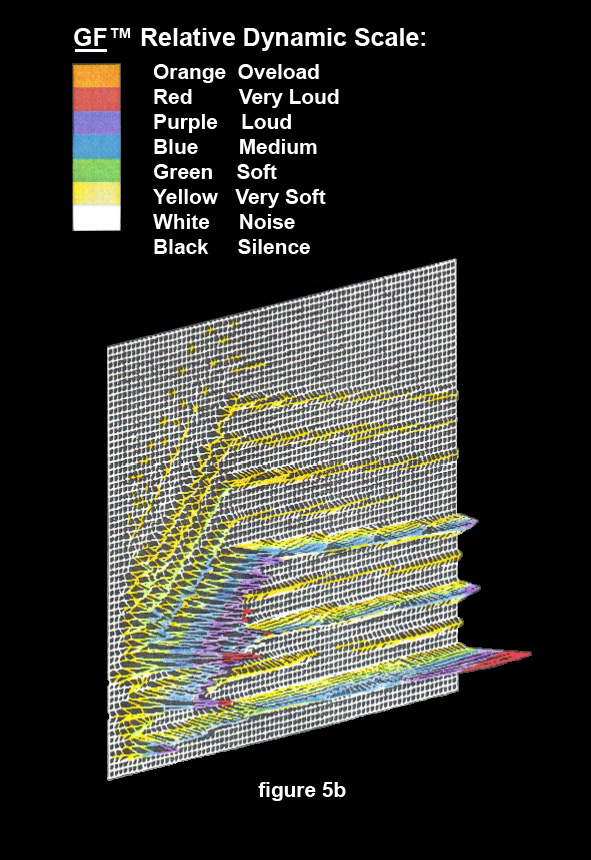|
email
contact Curso de Silbo Gomero on YouTube (under construction) Compilation
of Selected
References to the SILBO
GOMERO: Gomera's Whistling Language "GF-representation™ Software Package Description" Online Resources on the Silbo Gomero
BBC4's
"Word of Mouth" interviews Isidro Ortiz & Jeff Brent (mp3
audio)
I left the United States in early 1977 while I was still 21 years old. I had $700 in my pocket and figured that would last me about three months. I got a little summer job bartending in Brittany, France which led to me becoming a guitarist with a traveling band. After working the clubs in Carcassone for xmas and New Year of '77, we made our way south through Spain finally ending up in the sunshine of the Canary Islands. In January of 1978, while a beach bum on Gran Canaria, the Weech sisters Janice and Linda asked me to accompany them to the island of La Gomera. They said "This might be something for you. You're good at languages and you're good at music." Then they showed me a little blurb in their Berlitz guidebook about the Whistling Language of La Gomera. I had never ever heard of such a thing, and off we went. We made our way to Valle Gran Rey, where we camped for a couple of weeks. To return to San Sebastián, I trekked across the island's interior with a German couple. It's a three day walk, up ancient stair steps cut into the living rock faces of the steep barrancos, past beautiful panoramas of sea and stone, through deep misty rain forest, and across wide highland meadows. During our trek we often heard snatches of whistles blown our way by the sea breeze, and on the second day we stopped for lunch in a lush grassy pasture. During that break in our walk, we were treated to a lengthy whistled conversation which ebbed and flowed around us from all sides even though we never actually saw the whistlers themselves. It was absolutely magical. The weather was perfect, the view was breathtaking and while hearing the floating whistles, we felt as if we were in some lofty state of grace, privy to an experience that could only happen in some amazing dream. I didn't give it much thought at the time. I just pretty much accepted it at face value, a wonder of the world in a world full of wonders. About seven years later, that experience began to simmer in the back of my mind. I had a knack for languages, and began musing on whether or not it was even possible for an outsider to learn the Gomeran whistling language. In December of 1985, while living in Switzerland, I traveled to London to see what had been written in English on the subject of the whistling language. I didn't find very much material at all, but found references there which then led me to Paris, Madrid, Berlin and Washington, DC. Every chance I got, I went to these cities' libraries to collect everything I could concerning Gomera's whistling language. Within two years I had copies of every single reference in existence to La Gomera's history and its whistling language. But what I hadn't found was any way for a foreigner to actually learn the language. What I envisioned was a coursebook, complete with audio and graphic examples, much the same as those popular audio-casette / coursebook packages. But who could produce such a coursebook? It would obviously take a team of experts. You'd need a linguist, who intimately understood the inner workings of languages and who also spoke English, French, German and Spanish in order to decipher the various references to the language. You'd need someone well versed in the science of sound, probably a musician. And you'd need a computer graphics specialist to design a program to convert the sound into graphics. I suddenly realized that I was that team of experts all rolled up into one person. But how would the graphic representation look? After having seen the sonograms and spectrograms in the books "Whistled Languages" and "EL SILBO GOMERO: análisis lingüístico" I realized that a better graphical representation was needed. Being a musician, I wanted to make my graphical representation so universal that it could represent ANY sonic phenomenon (including music), therefore it had to be readable by musicians, but also be able to represent "sliding" sounds (such as bird calls, whale songs and, of course, the whistling language). In other words it had to be capable of representing both relative AND absolute sonic phenomena. One huge problem with sonograms and spectrograms is that they are represented against an arithmetic backdrop. In order to conform to the reality of all pitched sonic phenomena both absolute and relative, the background grid has to be logrithmic. Ignoring the harmonics which create timbre, the fundamental of a pitched sound can be broken down into three elements: pitch, duration and volume. Pitch has always been represented by how high or low the event is placed in relation to the vertical background grid. No reason to depart from tradition here. Duration was originally depicted in early music manuscripts as the length of the left to right line's distance over the horizontal time grid - and that seemed the most intuitive and obvious way to represent it. Volume was the big problem. How do you represent a volume which can dynamically change within the duration of the pitched event? Thickness is the traditional answer, yet there is a huge problem with that approach from a musical standpoint. When two notes occur next to each other and their thicknesses increase as their respective volumes increase they will invariably obscure each other. Thickness was definitely not the answer to the volume problem. I battled with this for a long time, and every possible solution resulted in a fatal flaw dead end. And then one night it hit me! The answer is to represent volume by means of gradient rainbow colors! Both an elegant solution and visually attractive too! However, the order of colors as they naturally occur in the rainbow do not intuitively represent the range of volumes possible from very soft to very loud. I finally decided to use the following color designations (which I christened the "GF-Spectrum™"):
Once this revelation had taken place,
I began writing my This in itself was a monumental undertaking and took me over a year. Revolutionizing the world of music by creating an entirely new form of musical notation is not something one does every day of the week!
GF-representation™
of a whistled word There are only three extant hard copy versions of this book. One is in the Library of Congress, Washington DC and the other two are in my possession (one of them being the original). This in turn led to my writing two smaller books: "GF"
Peripheral Devices: The
FOURIER-BRENT Transform
This takes a "3D" Fourier graphic waveform representation and by means of using my GF-Spectrum™ turns it into a two-dimensional graphic waveform representation for the purposes of representing sonic phenomena in conjunction with the new music notation GF-representation™. As above, there exists only three extant hard copies
of each of these above works:
The Movie At the same time, during my research in the great libraries of the world, I found out that the island of La Gomera was Columbus' very last port of call before his discovery of the New World in 1492. When I learned of this, I realized that in order to create interest, that it would be necessary to somehow link my whistling language project to the 500th anniversary of Columbus' historic voyage. This whole project originally began with my wanting to have an audio-visual means of learning the language and in so doing enable others to do the same. The most "audio-visual" of all media is a motion picture. Having read every anecdote of Gomera's colorful history, it was easy to see that the extremely bloody nature of the conquest of La Gomera, along with Columbus' alleged romance with the Countess of La Gomera, and its incredible scenic beauty made for great cinema and was the most obvious way to promote interest in Gomera's whistling language. I also realized that in order for the movie to coincide with "Columbus Year" (1992) that I had to get to WORK! It takes a couple of years to make a film, and so I set my deadline for completion of the filmscript for 1990. After a few very intense years of hard work, by 1990, the filmscript was all polished and ready to go. I had my people in Los Angeles shop it around, National Geographic initially expressed a great deal of interest for their Explorer Series, and since I was living in the Canary Islands in 1990, I also shopped it to some local film producers who also expressed interest. Filmscripts sell for about $35,000.00. With that money, I was going to finance the development of my new music notation software (which appears prominently in the film) and be able to record the coursebook that I had written to document the whistling language.
"The Gomeran Whistle: Linguistic Analysis"
Consequently, Prof. Trujillo visited me at my office in Santa Cruz de Tenerife where I was currently the director of a language school and also invited me to his offices at the University of La Laguna. We had some very interesting conversations concerning his conclusions.
The Coursebook
When writing the coursebook, it was decided early on that it was to reflect the nature of the whistling language itself. Since the whistling language is largely used outdoors, the vocabulary and verb choices were limited to "exterior" verbs and nouns. Since the language is almost always used in a rural setting, every attempt was made to have the situational settings conform to the types of things that the Gomerans themselves would actually converse about in the open air. The advice and assistance of the language experts Dr. Allan Dalcher and Señora Pilar Fernandez in the writing of this coursebook was invaluable. Linguistically speaking, it contains every grammatical structure and every permutation of every structure in all persons (1st, 2nd & 3rd persons sing. & pl.), all of the most common verbs (in all conjugations) and all of the most common and relevant vocabulary. As such, this coursebook would not only enable anyone to become proficient in the whistling language, it would also be entirely possible to reconstruct the whistling language should it ever become extinct (as many have predicted). Furthermore, it would represent an enormous body of empirical data that could be used to prove or disprove anyone's theories of how it actually works. As can be seen in my "Preface to the Compilation: Phonetic Table, there are a several areas of controversy between André Classe (co-author of "Whistled Languages") and Trujillo as regards certain consonants. In fact, Trujillo's 1978 work is almost entirely a refutation of Classe's conclusions as presented in his 1956 article "The Phonetics of the Silbo Gomero". In addition, I myself have some areas of divergence with Trujillo's assertions concerning certain vowel issues. In the final version of the coursebook, I would naturally be obliged to write up my own conclusions about the characteristics and structures of the Gomeran whistle, based on the empirical data as recorded in the coursebook. Compilation of Selected References
The last time I was in the tiny public library in the Gomeran capital of San Sebastián there existed only ONE reference to its whistling language -Trujillo's book. It seemed odd that there was no copy of "Whistled Languages". How strange that Classe and his co-author Busnel would go to all the trouble to write a book with its main focus being Gomera's phenomenal form of whistled communication and then NOT make it available to the Gomerans themselves! During my research at the European libraries, it was exceptionally difficult to track down many references - even when I knew they were there. So now once and for all, future researchers could find everything that had been written on the Gomeran whistling language up until that point in time, without having to travel as far or work as hard as I did. There are only two extant copies of my compilation in existence: One in the Library of Congress and the other one in the library in San Sebastián de La Gomera. I did not make a copy for myself, because I still have all the original photocopies. Besides everything you need to know is in the filmscript anyway. The only portions of the "Compilation of Selected References to the Gomeran Whistling Language" included on this website are my preface and its two bibliographies. You'll see that the bibliographies in the compilation are very similar to the bibliography of the filmscript, however the chronological bibliography in the compilation has some very interesting comments for scholars. The copy of my compilation in the Library of Congress is not the same as the one on La Gomera. There is no need to duplicate any materials in that copy with materials that you can easily find in Washington, DC, so I left them out. The Gomeran compilation contains everything that can't be found in Sebeok's incredibly comprehensive book "Speech Surrogates", including a copy of my heavily annotated "Whistled Languages".
I would also delete all the scenes involving whistled control of electronic devices. Voice recognition has come a long way in the last fifteen years, and shortly it will be completely perfected. AND I would definitely scrap the Construction Workers scenes! Nonetheless, the central body of the film is the exceptionally accurate dramatization of the most important historical events in the Gomerans' extremely colorful past. This island may be small, but its story is as fascinating as any great nation's! I hope you will read the script, and may the movie that plays in your mind while reading it both entertain and educate.
When launching into reading the filmscript, you'll naturally want to start with the Proposal first and then the Treatment. For the filmscript itself, use the "Guide to Master Scene Script" as the Table of Contents to the filmscript. Since it's all hyperlinked you can go directly to those portions of the script which interest you the most. The coursebook is included here for posterity. It might be of interest to a linguist or other scholar, but it's not really something that I believe the general public would enjoy reading.
As I sat in the plane high over the mighty Atlantic Ocean, I thought about what I had done in the more than fifteen years that I'd been gone: I'd circumnavigated the globe, traveled all over Western Europe, Northern Africa, the Middle East, the Indian Subcontinent and the Far East. I'd mastered several languages (French, German, Swiss German, Spanish), and become familiar with a few more (Arabic, Italian, Dutch, Silbo Gomero). I'd mastered several musical instruments (piano, guitar, flute, saxophone). I'd played music for hundreds of thousands of people, sometimes as many as 10,000 at once. I'd recorded a few of my original songs. I'd written seven books, translated an important scientific work, written a filmscript and invented a better system of music notation. And I still had $700 in my pocket. So I guess I broke even. 7
SILBO
GOMERO: Gomera's Whistling Language "GF-representation™ Software Package Description" BBC4's
"Word of Mouth" interviews Isidro Ortiz & Jeff Brent (mp3
audio)
If
you've found your way to this page from a Search Engine link, |



